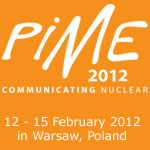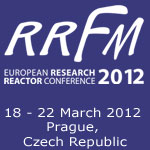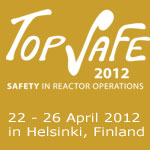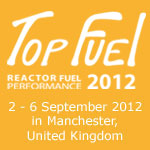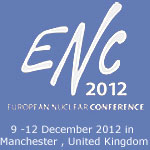
| |
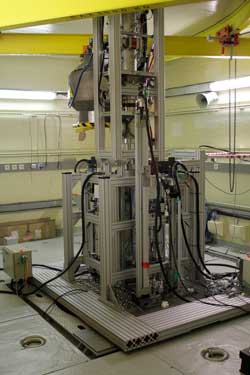 |
A: Prof. Dr. Peter Baeten: The experiments are conducted within European Framework Programmes which focus on the transmutation of long-lived nuclear waste in an ADS. Ten research institutes from different countries are participating in GUINEVERE. One of our key partners is the Centre National de la Recherche Scientifique (CNRS). They developed and built the Genepi-3C accelerator on their site near Grenoble and prepared it for transportation to SCK•CEN in 2009. CNRS employees also helped with the installation of the accelerator in the VENUS installation. The Commissariat à l'Energie Atomique et aux Energies Alternatives (CEA) in Cadarache helped us with the concept and infrastructure of the reactor and supplied the uranium fuel. Other partners include the German KIT and FZD, the Swedish KTH, the Italian ENEA and the Spanish CIEMAT. They conducted support studies in particular for the safety files. It was an international mix, but as I said, the cooperation with all parties on the site was very smooth because everyone was on the same wavelength. |
|---|
Q: The GUINEVERE research facility was inaugurated on March 4, 2010, in the presence of the media and many VIPs. Why has it taken more than one year for the real coupling between the accelerator and the reactor?
A: Prof. Dr. Peter Baeten: At the beginning of 2010 SCK•CEN received the licence from the Federal Agency for Nuclear Control to build and test GUINEVERE. We took a whole year to test the non-nuclear parts of the reactor: the ventilation system, the monitoring system, the particle accelerator and so forth. We started the reactor in the critical mode in February 2011. After a series of detailed tests in this mode, we coupled the reactor to the accelerator and the system was switched to the sub-critical mode. This has never before been done with a fast lead core.
Q: How do you see the future for GUINEVERE?
A: Prof. Dr. Peter Baeten: We are now running an experimental program to validate the methods for determining the sub-criticality of the system in different operating conditions. Sub-criticality in an ADS is a very important safety parameter. Specific to an ADS is that a particle accelerator maintains the nuclear fission chain, as a neutron source outside the reaction. This offers great advantages in terms of safety: if we turn off the accelerator, it also stops the sub-critical nuclear reactor automatically. The condition of sub-criticality is essential for the safety of this type of reactor. We need to be able to make accurate measurements under these different operating conditions. The ultimate goal is to fine-tune the procedures for the operation and control of sub-critical reactors. The GUINEVERE project will thus contribute to the safety of future ADS's.
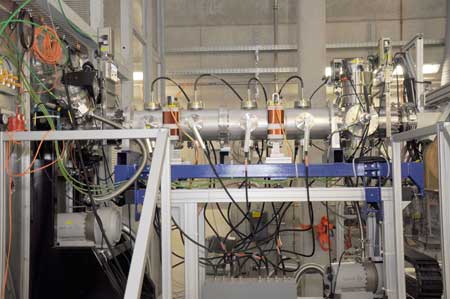
The second objective of GUINEVERE is the execution of experimental studies to characterize the MYRRHA core configurations. For this new research reactor, we have to study and validate different core configurations. Therefore, we converted the VENUS reactor into a quick zero power lead reactor (VENUS-F). With GUINEVERE we can validate experimentally the neutron codes calculated for MYRRHA, by characterizing the unique core, consisting of lead and uranium. These codes reflect the distribution of neutrons in the reactor which is important for control and safe operation. These experiments take place within the new European project FREYA which runs from 2011 to 2014. FREYA will contribute to the further development and refinement of accelerator driven systems.
Q: This successful coupling also brings MYRRHA one step closer?
A: Prof. Dr. Hamid Aït Abderrahim: The story of MYRRHA begins in 1997. After a feasibility study with a team of four people, we worked out the first draft. In 1999 we were involved with six people in a European Commission project to develop an experimental ADS, competing against two other industrial projects. We were very excited to develop MYRRHA and nothing could stop us. Yet we realized very clearly that we had started out on a long adventure, and that we would have many obstacles to overcome.
With GUINEVERE we crossed a major hurdle and we also proved at the European level what expertise we have in Belgium. We constructed a sub-critical reactor with a lead core and managed to couple it to a particle accelerator. Plus, our security authorities are qualified and sufficiently experienced to study such an innovative system, so that its safe operation is guaranteed. Therefore in 2006, when another crucial ADS demonstration project in the framework of EURO TRANS was stopped, I did not hesitate one minute to transfer this project over to SCK•CEN. We fought for six months to convince our European colleagues that the implementation of the experiment in our VENUS installation was a viable proposal.
I want to take this opportunity to thank the general management and the board of directors at SCK•CEN for the trust they have placed in the GUINEVERE project team. A motivated team that has made tremendous efforts for the development of the design, for the preparation of the safety studies, for the construction of the entire installation and for obtaining all necessary approvals. They deserve a great compliment. So for me, the most important result is that GUINEVERE showed that where there's a will, there's a way! I see GUINEVERE as a kind of training for the World Cup we will play with MYRRHA. GUINEVERE is actually a small scale model is with less power, hence my nickname "baby MYRRHA". To demonstrate the feasibility of the ADS concept is an important objective of the MYRRHA project, and GUINEVERE is the first step.
Q: Does GUINEVERE contribute in other ways to the development of MYRRHA?
A: Prof. Dr. Hamid Aït Abderrahim: With GUINEVERE we will perform experiments to characterize the MYRRHA core configurations. In this way we can validate the calculated neutron codes. The MYRRHA designers, who further optimize the design, will use these results to refine the previously defined safety margins. For the optimization of the MYRRHA design, this is a big step forward.

Abbreviations
-
GUINEVERE: Generator of Uninterrupted Intense Neutron at the lead VENUS reactor
-
VENUS: Vulcain Experimental Nuclear Study
-
EUROTRANS: European Research Programme for the High Level Nuclear Waste transmutation or in an Accelerator Driven System
-
FREYA: Fast Reactor Experiments for Hybrid Applications
MYRRHA: Multi-purpose Hybrid Research Reactor for High-Tech Applications
Press releases
-
GUINEVERE paves the way for MYRRHA – march 4 2010
-
The Belgian Government gives its go ahead for the MYRRHA Project – march 4 2010
Websites
